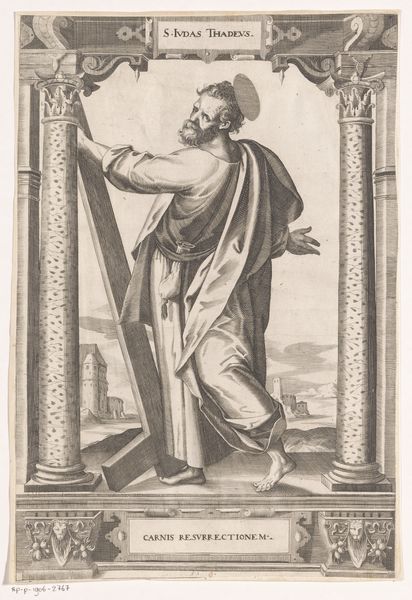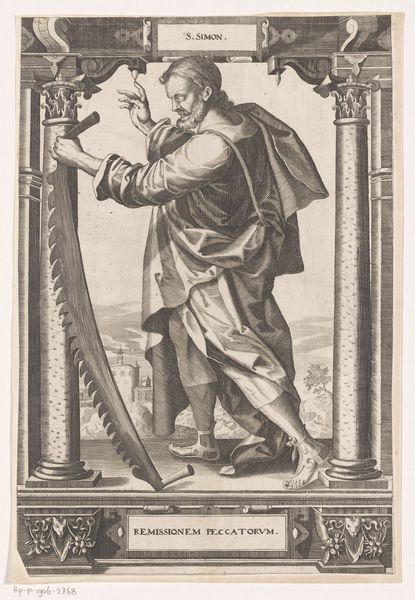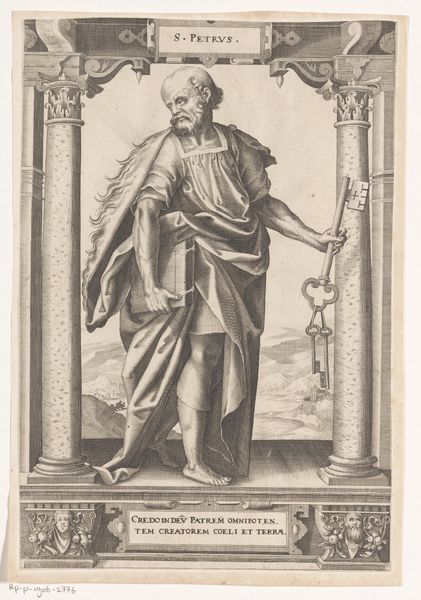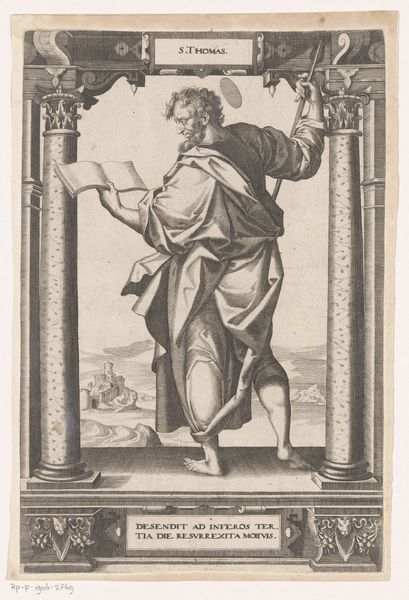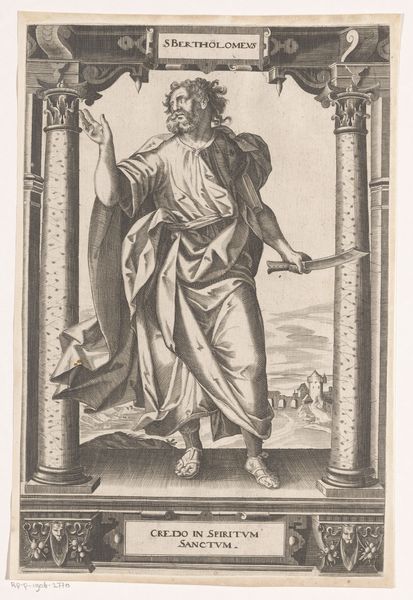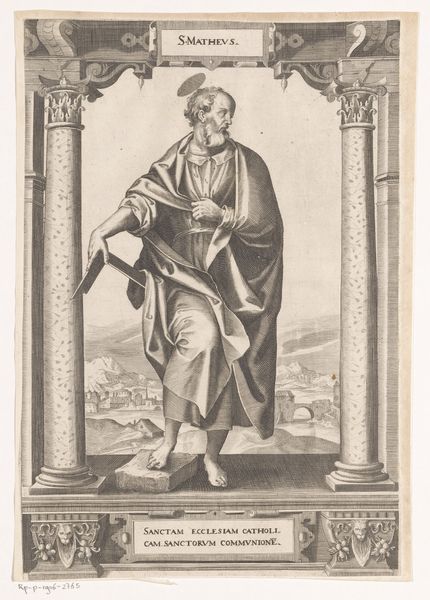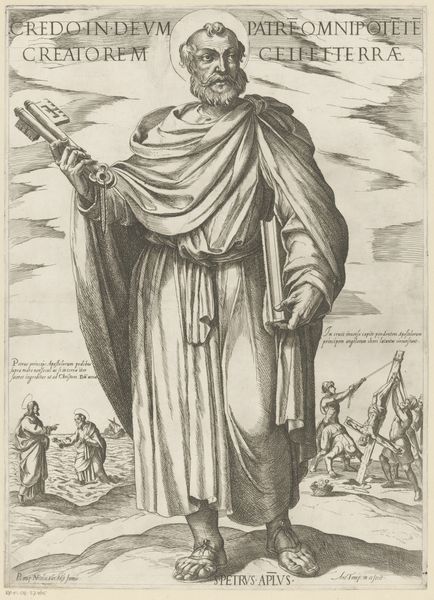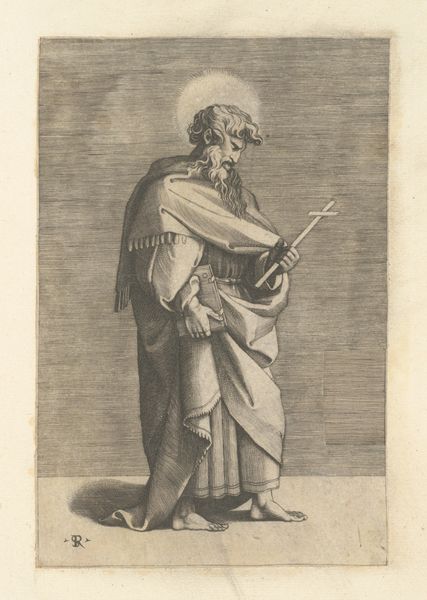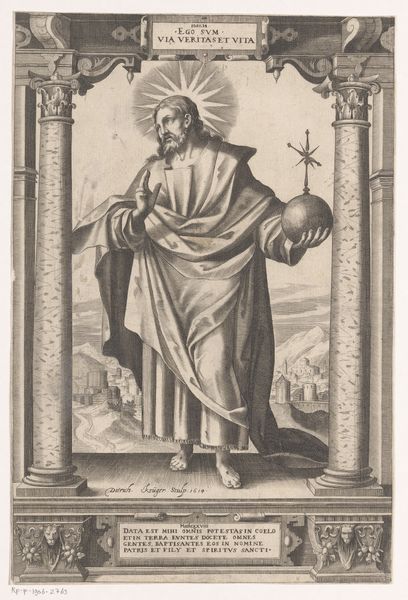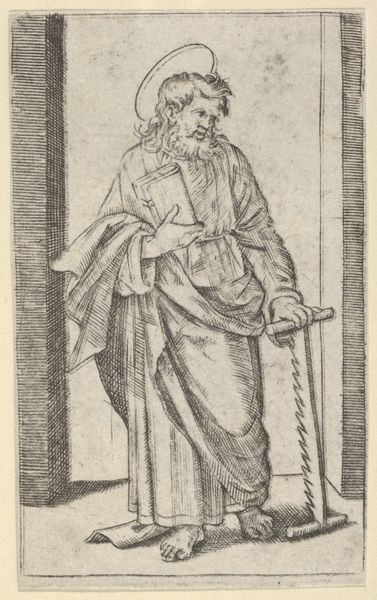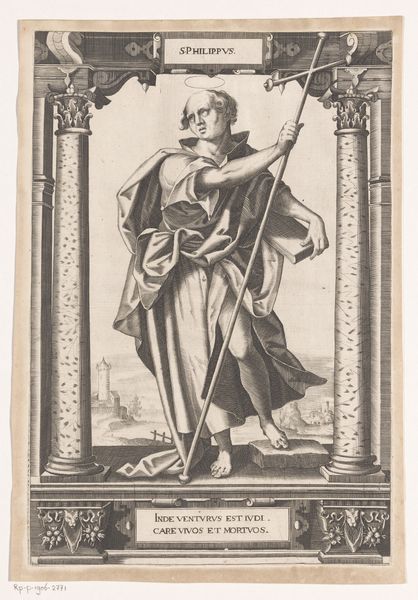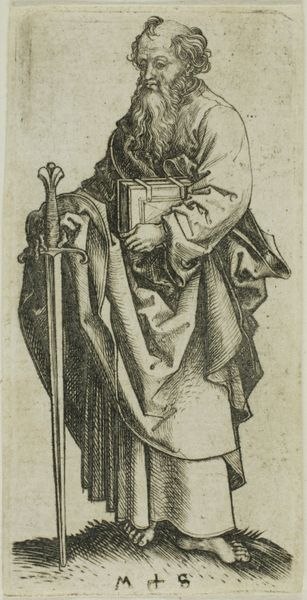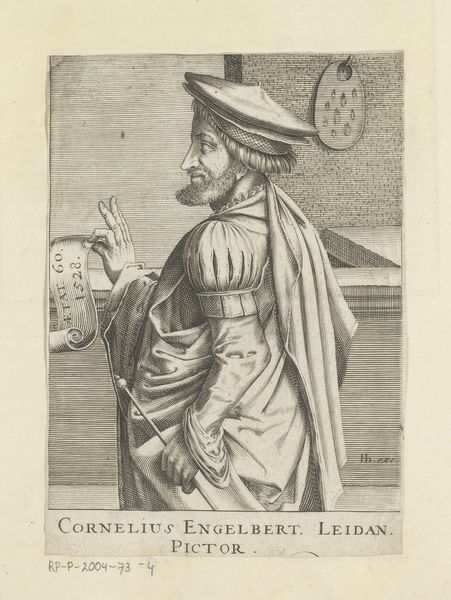
print, engraving
#
portrait
#
baroque
# print
#
old engraving style
#
caricature
#
figuration
#
portrait drawing
#
history-painting
#
engraving
Dimensions: height 320 mm, width 215 mm
Copyright: Rijks Museum: Open Domain
Curator: This engraving from 1614, entitled "Apostel Jakobus de Meerdere", now housed in the Rijksmuseum, offers a fascinating lens through which we can examine religious iconography and the socio-political climate of the time. Editor: My first impression is how the artist contrasts the sacred subject with a style that almost veers into caricature; I sense tension between the Baroque’s ornate sensibilities and what looks like almost folksy characterisation. Curator: Yes, there’s definitely a visual tension. Considering this, think of how Saint James is depicted traditionally, particularly in the context of the Baroque period and Counter-Reformation art. This print seems to simultaneously reinforce and subtly undermine the idealised image of a saint. What might be the political implication of portraying religious figures in such an earthy manner at the time? Editor: Well, the hat and walking stick, the book: these are attributes that carry a clear symbolic weight, pointing directly to the imagery associated with Saint James as a pilgrim and apostle. One is inclined to recall his association with pilgrimage routes and the propagation of Christianity; it projects both authority and itinerant wandering. Curator: Exactly, but his attire can be seen as either pious humility or borderline destitution. Looking at the context of the Eighty Years’ War, what could it mean to emphasize the humble appearance of a religious figure while Spanish rule was trying to reinforce strict Catholic orthodoxy? Perhaps we are dealing here with a critique embedded within devotional imagery, revealing tensions about wealth and devotion. Editor: I see the perspective. But is there also perhaps a suggestion that he remains an icon accessible to everyone? Regardless of earthly status, pilgrimage is a metaphor of everyone's individual life quest. The architectural framing, classical yet slightly awkward, also interests me—the symbolic doorway… Curator: I find that point about individual quest very important. Also, by placing him in a somewhat "imperfect" classical structure, maybe it shows how the classical ideals are still standing, though weathered by time, in need of questioning, to open paths in uncharted territories. Editor: It makes one consider the evolving and often conflicting artistic, religious, and socio-political discourses of the era. Curator: Absolutely, Dietrich Krüger’s "Apostel Jakobus de Meerdere" prompts us to dig beneath the surface of religious iconography to examine the intricate dialogue between representation, faith, and resistance in a tumultuous historical moment.
Comments
No comments
Be the first to comment and join the conversation on the ultimate creative platform.
